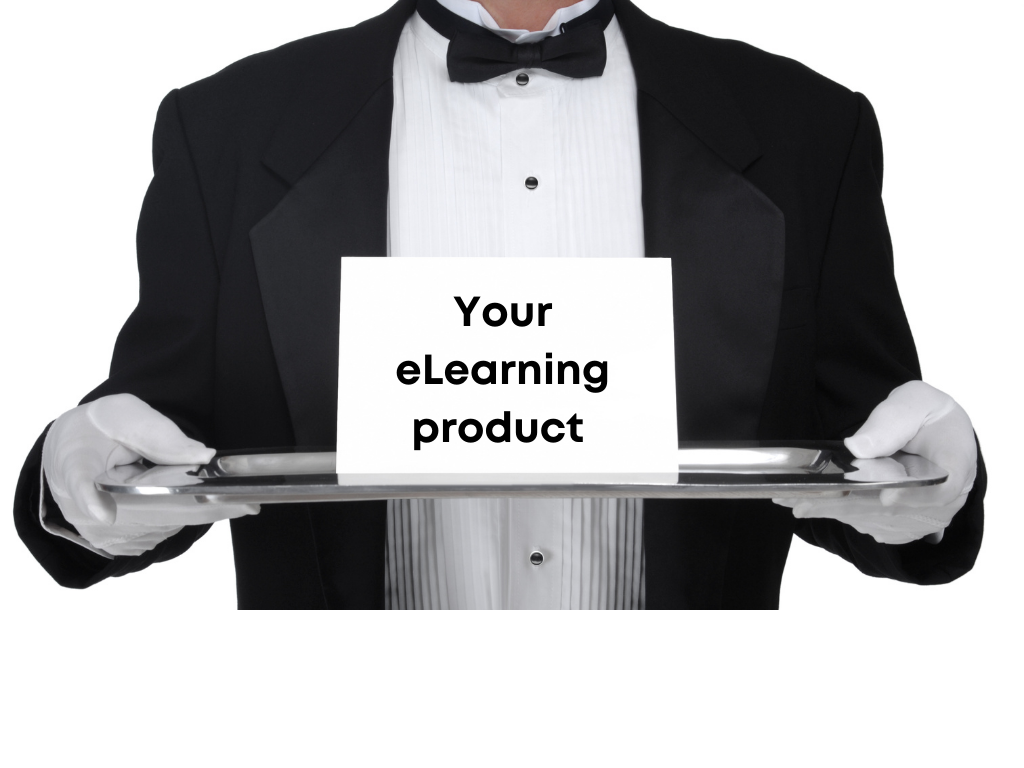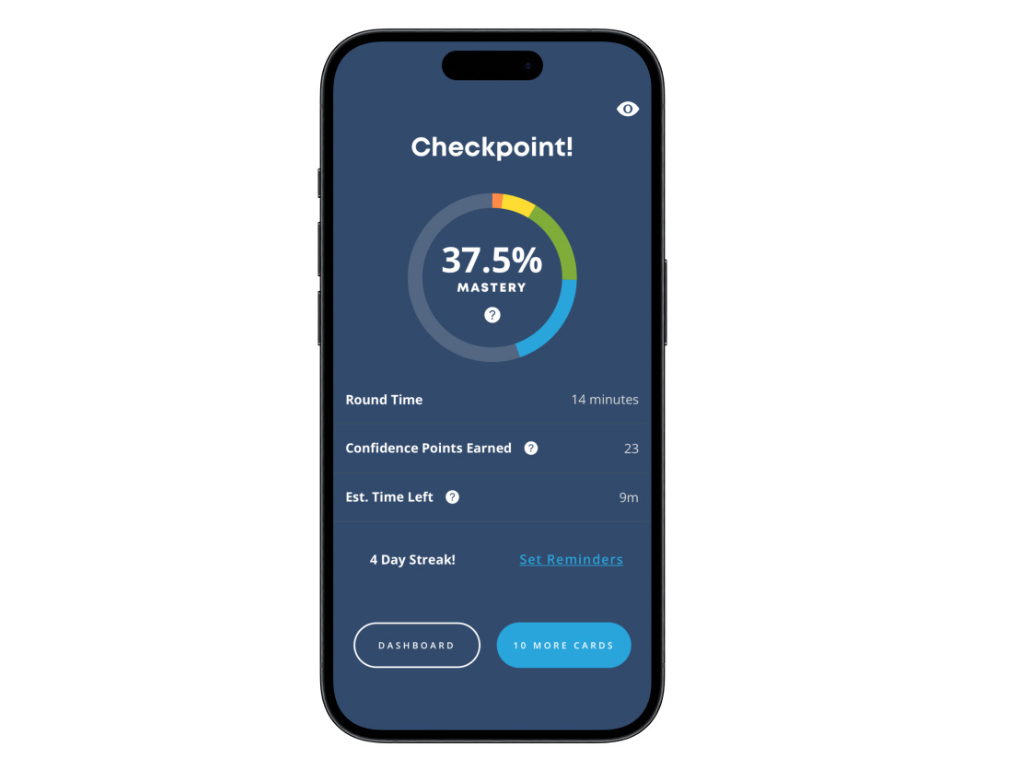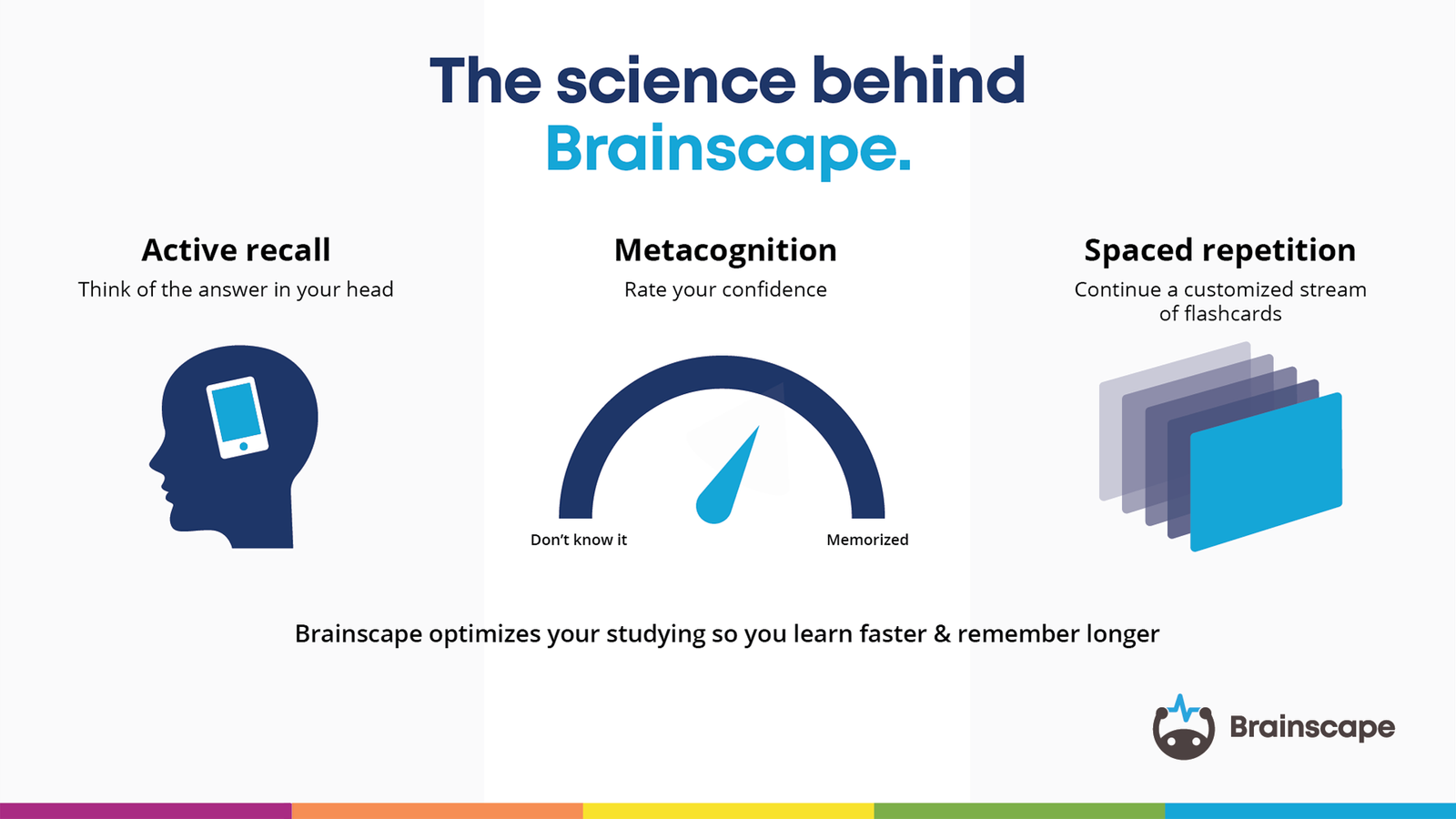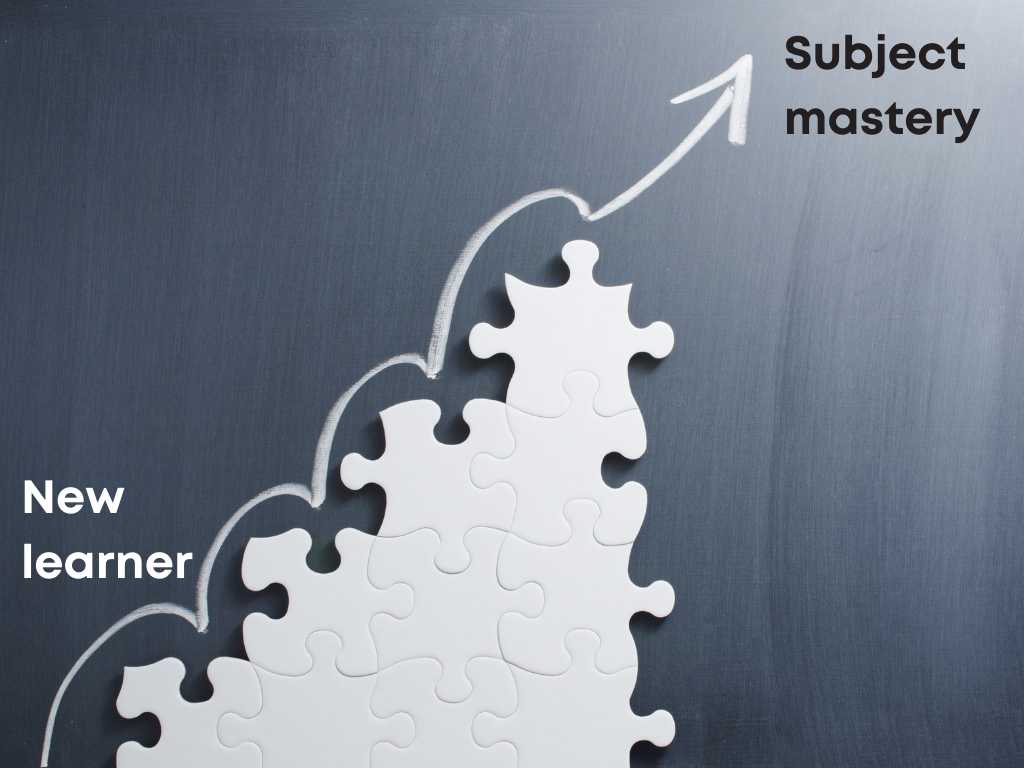Recent changes in the world have created a thunderous demand for eLearning – whether it’s to prepare for high-stakes certifications, to advance toward better job opportunities, or just to satisfy the curiosity of the life-long learner. Independent online courses and study resources have thus become massive money-making enterprises.
So if you happen to have the right educational content of your own, you may be drawn toward the delicious potential to make good money and do good in the process. The challenge is that you need more than just good content...
- You need to intimately know your audience and how to market to them;
- You need to understand what experience they’re looking for and how to create it for them;
- You need an attractive, functional, and intuitive online environment (for both web and mobile) that appeals to learners; and
- You need to constantly assess performance metrics so that you can evolve your product to cater to even the most nuanced demands.
At the end of the day, if your audience doesn’t find what they want from you, they’ll find it at one of your competitors.
The good news is you’re in exactly the right place for advice on how to lay the groundwork for a lucrative eLearning business. As the team behind Brainscape, the world’s smartest study app for thousands of subjects, we know just what it takes to transform great content into great business (AKA dolla billz).
So we've laid out this comprehensive guide to creating a successful independent eLearning business. We hope it helps bring you clarity, efficiency, and profits!
(And if you're interested in creating and selling flashcards for your area of expertise, fill out this form!)
Your step-by-step guide:
- Step 1: Know your audience (so you can sell to them)
- Step 2: Know why you’re different (and how to communicate that with your audience)
- Step 3: Know your distribution channels
- Step 4: Decide whether your product will be full-service or complementary
- Step 5: Figure out your knowledge format/s
- Step 6: Determine whether to incorporate flashcards into your eLearning offering
- Step 7: Divide your subject and conquer
- Step 8: Choose the right eLearning technology
- Step 9: Create a solid landing page
- Step 10: Collect robust analytics
- Step 11: Talk (and listen) to your users frequently
Step 1: Know Your Audience (So You Can Sell to Them)

The first step on your journey to building a successful eLearning enterprise is knowing exactly who your audience is so you can tailor your product and messaging to appeal to them. This requires you to answer the following questions:
- What are their learning goals? (For example: are they after a formal certification or just interested in advancing their personal knowledge?)
- What are the existing study resources for your particular subject/s or skill/s? (i.e. who are your competitors and why are they successful?)
- Where does your audience congregate and engage online (Reddit, YouTube, Quora, etc.)? You’ll want to insert yourself into these conversations so that you can (1) get valuable insights straight from the people who matter and (2) begin to build your presence pre-launch.
- What are people willing to pay to achieve their learning goals? (You can learn this from your competitors’ pricing and your conversations with your audience via the aforementioned channels. Also, consider how much learners have to pay for the exam they’re preparing for, the cost of learning materials, and how many other similar prep courses are offered out there. Affordability could be what sets you apart!)
Remember, content is king and queen but it cannot be profitable without an audience! Do your research so that your efforts and resources are spent in the most targeted and profitable way possible.
Step 2: Know Why You’re Different (and How to Communicate That With Your Audience)

The eLearning landscape is a fiercely contested one. And while you might think you’re the best person to teach this subject or that skill, the only way you’re going to be able to make money is if you convince your audience of that.
Before you even position yourself in front of your customers, you need to find out what makes your product different from your competitors. What are the benefits? Why should people choose your eLearning brand?
Don’t just focus on yourself (I’ve got a Master's degree; I have x years experience teaching; I’m super smart blah blah). Focus on how you serve your audience’s needs better than the other brands on the market.
Step 3: Know Your Distribution Channels
Distribution is the process of making a product or service available for the consumer or business user who needs it. For example: will you be selling your eLearning product or service to an institution, like a school or university? Or will you be selling it to individual consumers (learners)?
Knowing your distribution channels is the part where you figure out how you’re going to connect your product with your audience and it consists of the following core questions:
Who will be buying your eLearning product/service?
Is it the CLO (Chief Learning Officer) of a company or an employee with aspirations of being promoted to management? Is it the dean of a university or a college student? Is it a high school teacher or a parent with kids in that school? What is the buyer's biggest pain point, and what words do they use to describe it?
What is your current online presence?
Do you already have a big online presence and audience of your own, in your core market? Or do you need to grow this from scratch?
What combination of marketing strategies will work the best?
Should you go with paid advertising (if your product is expensive enough to justify the high cost)? What about email lists? Or both? How about direct sales outreach, social media, or affiliate or content marketing?
What payment method will work for me and my audience?
Should you have a once-off price or monthly/annual subscription fee? How about one price for everything or a tiered price program where users pay more for more advanced features? Or a package offering versus an à la carte menu of courses? What about discounts, special offers, free trial periods, and referral programs? The more payment options you present, the more accessible you make your product.
Figuring out the answers to these questions will help you determine the best route to get your product into your audience’s hands.
Step 4: Decide Whether Your Product will be Full-Service or Supplementary

Are you the full, authoritative course? The A-to-Z on a particular subject? Or is there already a great course/book out there, and you just want to provide a study supplement, like digital flashcards? Or do you want to create both: the A-to-Z course and the supplementary flashcard collection?
If you do want to produce a comprehensive learning resource for a subject or skill, that’s great! However, a lot of money can be made by leveraging existing authoritative courses simply by developing complementary study tools or resources for them (not to mention the fact that this approach requires a lot less work).
For example: you could approach someone/an institution who has published a course or book on a particular subject and offer to translate that into an eLearning product and/or a flashcard collection* (on Brainscape).
Pro Tip: Don’t worry about speaking to them before you build your product: nobody is going to copy your idea; especially if you do a good job of convincing them why YOU are the right person to build the complementary product you’re pitching.
Step 5: Figure Out Your Knowledge Format/s

Now that you have a better idea of the scope of your product, it’s time to figure out the best format to deliver its content, skills, and/or expertise to your audience.
A 3,000-page ebook of margin-to-margin text is probably not going to do very well. It’s just not stimulating enough for most people.
But if you mix it up and include a variety of media, such as those we’ve listed below, you’ll likely enjoy more engagement. And great engagement = successful learning!
- Live instruction
- Written resources/guides
- Instructional/tutorial videos
- Animations and simulations
- Slide presentations
- Flashcards*
- Discussion forums
- Quizzes or exercises
- Practice exams (formatted like the real deal)
*If your subject is content heavy and requires quite a bit of memorization of knowledge, you should consider creating flashcards for it in Brainscape. You can then offer this to your users and to Brainscape’s existing audience as a paid-for product. More on this in a bit.
How do I Choose Which Knowledge Format is Right for My eLearning Brand?
Naturally, that depends on a few things!
Is Your Subject SKILLS-Intensive?
A skills-based subject like writing, math, and sales requires more hands-on practice to master, so such a course should place an emphasis on both demonstrations (video tutorials, animations, and live lessons) and on frequent assessments like exercises, quizzes, and practice exams.
Conversely, purely skill-based subjects tend to have less of a need for memorization tools like flashcards, as they don't require as much internalization of theory, vocabulary, diagrams, rules, or procedures.
Is Your Subject KNOWLEDGE-Intensive?
On the other hand, a content-heavy subject that does require learners to master a lot of information (like biology, law, or a product catalog) would do very well with written resources and flashcards, combined with more formal summative assessment.
[Note that some subjects are both knowledge- and skill-intensive, in which case you might want a combination of all the formats discussed above. The variety of media should also help to keep students engaged.]
Is Your Subject Complex and Difficult to Learn?
Next, you should take into account how difficult your subject is. If it is a complex, involved topic, then you’ll need to unravel it in great detail and with plenty of adjunctive study tools and media so that students find it approachable and manageable. If it's easy, just a series of simple slides, videos, or readings might be enough instructional material to get the job done.
Are Your Students Preparing for a Formal Certification?
Another major factor in how students will be consuming your content is whether they are learning it just for their own skills or to actually prepare themselves for a big exam. Students preparing for a certification will need all the tools available to ensure that the knowledge sticks and will be mentally available on test day.
The need for true internalization of knowledge may justify the creation of digital flashcards with spaced repetition. Remember, if your students are preparing for a certification, you want them to score high marks so that they attribute (part of) their success to your eLearning brand! Give them the resources they need.
Is Your Course Short and Quick, or a Long-Haul Journey?
You also need to consider how long students typically need to study. There’s not much point in offering a complete encyclopedia of study resources if all it takes to pass is a simple quiz. In fact, creating too much content can actually be damaging to your product’s success, since efficiency is one of the most important metrics.
On the other hand, if passing that subject is a long-haul challenge that requires several months of intensive studying, it makes sense to supply the necessary support. And since students on this path will likely be with you for much longer, you may consider providing adjunctive tools like a study plan or calendar, or an adaptive flashcards tool with a progress gauge like Brainscape’s mastery meter, which will help them manage their time better:

Step 6: Determine Whether to Incorporate Flashcards into Your eLearning Offering
As we touched on earlier, flashcards (especially Brainscape flashcards with spaced repetition) are incredibly effective for the memorization component of content-heavy subjects. This is particularly true when that subject has a formal exam that students find quite stressful to prepare for, such as the bar exam, the NCLEX (nursing), or MCAT (medical school).
Click here to apply to become an Authorized Creator with Brainscape (and you could make a passive income with your flashcards if they become popular).
There’s a reason we’ve built our study app upon the bedrock of cognitive science and that’s because we can leverage the three pillars of efficient learning:

- Spaced repetition: By frequently repeating concepts the individual struggles with, they learn quicker and waste less time with concepts they already know.
- Active recall: Brainscape’s flashcards compel users to remember information “from scratch” or from memory, rather than having it prompted by multiple-choice answers. This establishes much stronger memory links (neural pathways) to that information, helping them to learn it quicker and remember it for longer.
- Metacognition: Our flashcards also compel users to consider how well they know the answer to a question (i.e. to think about their thinking) and this establishes an additional neural pathway to that information, reinforcing the memory.
In other words: Brainscape works. And we partner with many educators and subject matter experts who complement their teaching services with flashcards that they’ve made using our adaptive study platform. With thorough review by our team of independent experts, these collections can join the ranks of our paid-for certified flashcards, essentially setting up a passive revenue stream for these people.
You can gauge the existing demand for studying your subject in flashcards format by seeing the popularity of existing user-generated (i.e. "non-Brainscape-certified") flashcards on the Brainscape marketplace.
Want to resell with Brainscape? Check our guide on how to sell your flashcards!
Step 7: Divide and Conquer

Now that you’ve chosen your format(s), it’s time to work out how you’re going to take your incredible knowledge of a subject and break it down into a series of easily digestible lessons, chapters, or modules.
- What material will you cover? Start by deciding exactly what information you need to cover in order to give students the knowledge and tools they require to become proficient in that subject and pass the exam (if there is one). On this subject...
- Align your content with the official curriculum. If there is an official curriculum or guidelines for what is ultimately required to pass the exam or certification, make sure you align your content with that blueprint as much as possible. You don’t want to tell your customers to learn more than is absolutely necessary.
- Develop a sensible course outline: Delineate your subject into its major chapters, lessons, or modules. For example, if you’re teaching students about wine, you might create chapters for the red wines of the world, white wines of the world, sparkling wines of the world, etc.
- Break each module down further into sections that are cohesive and logically ordered. For example, that chapter on red wines could contain sub-sections that focus on particular varietals of red wine: cabernet sauvignon, pinot noir, merlot, shiraz, etc.
- Add a “what you will learn” outline at the beginning of each module and a chapter summary and some form of knowledge check at the end (exercises, flashcards, quizzes, etc.) so that learners know the key takeaways and can practice their newfound knowledge.
- Once you’ve plotted out your entire course, create a roadmap for students to use (like a concept map, video animation, or flowchart), so that they know exactly what they’re going to learn and how they can expect to progress through the material.
Step 8: Choose the Right eLearning Technology
Choosing the eLearning tech* you’re going to use to deliver the goods to your audience is a crucial step, and one that counts enormously towards your future success.
In fact, this step is so important that we really recommend you put in the time to do the necessary research, and even—if possible—take the various online course platforms and eLearning software you come across for a test drive (many offer free trials).
*eLearning tech refers to both eLearning (online) content authoring tools/software, and Learning Management Systems (LMSs) or Virtual Learning Environments (VLEs). Simply put, authoring tools/software are the programs you use to create your course content, and your LMS or VLE is where your students interact with that content.
Some great examples are:
- Udemy for launching your first course
- Skillshare for teaching creative skills
- Teachable for creating an online school with advanced marketing
- Podia for selling digital products and memberships
- Thinkific for building courses from scratch
- Kajabi for marketing a course on autopilot
- LearnWorlds for creating an online learning environment or school
- Mighty Networks for building a paid community
- Pathwright for building action-oriented courses
- Xperiencify for gamifying your online course
- Brainscape for creating digital flashcards for any subject
With that said, here are some important things to consider:
Do you want total creative control or something quick and easy?
Some online learning platforms make things ridiculously easy by offering you (inflexible) pre-made templates to work with, and very few decisions to make with regards to appearance, functionality, etc.
But decisions equal creative freedom...so if you want a highly customizable eLearning software that allows you to control every element of design, layout, and appearance, you’ll have to make sure the tool you use accommodates that flexibility.
Just remember:
- The more sophisticated the software, the pricier it is likely to be, and ...
- The more advanced your design and development skills will have to be in order to work successfully with it!
- Make sure your fancy end design is supported on all platforms (devices and browsers)
Does it Support Your Knowledge Format/s?
If your course includes multimedia, it’s pretty important that the eLearning software you choose makes it easy for you to create, edit, and upload content in multiple media; but also has other useful tools and features.
Just remember to keep your content highly focused and relevant. Multiple resources are good only if the subject is complex and requires additional support to help students through it. In other words: strike a healthy balance between efficiency and thoroughness.
Does it Support Your Preferred Delivery Method?
How are you going to be delivering your eLearning course to your learners? Will they be able to access the lessons offline? (Not being able to learn offline can be a huge handicap.) And how about via their mobile device? Obviously, the more accessible your content is to learners, the better.
How Interactive Do You Want/Need Your Course to Be?
Depending on the subject, you could go balls to the wall with interactive elements, from clickable images to video animations and more. You need to decide how interactive and immersive you really want or rather need this experience to be for learners.
The more sophisticated the online learning platform you choose, the greater the opportunities for this kind of customization ... but also the more expensive it will be.
Do You Need to Track Your Learners’ Data and Performance?
User data is one of the most valuable sources of information you have at your disposal: it tells you which concepts/topics your learners are struggling with the most and, therefore, what can be improved, whether that be a reiteration of the content you currently have or the addition of resources.
So, it’s our recommendation that you look for an online learning platform with detailed tracking capabilities, like Brainscape does, as this is how you’re going to hone your product’s offering to a razor-sharp edge. It may be more expensive but it’s a worthwhile investment if you work with the data it provides.
Can You Benefit from Regular Email Communication With Your Audience?
Every business benefits from regular communication with existing and potential customers. You need an email marketing strategy.
The more you cloak these emails in actual value and entertainment, the more likely they’ll be to investigate your offer. For example, you could include engaging videos and tips, tricks, and tools for succeeding in your particular subject or skill.
Does It Support Assessment?
Frequent assessment—whether accomplished with quizzes, exercises, full-length exams, or adaptive flashcards—is incredibly important for reinforcing knowledge and gauging students’ progress. This is true for ALL subjects, whether skills-based or content-heavy. Your platform should have the right tools in place for you.
Also, consider the nature of these assessments: do you want to create a quick “check-the-box” quiz or a three-hour, full-length exam-type experience?
Other considerations:
- Will the software satisfy your future needs (for growth and change)?
- Does it provide strong tech and community support?
Make sure your online learning platform supports all of the needs we have mentioned above because once you make that investment, it’ll be a huge disruption to have to pack up and jump ship.
ALTERNATIVELY (Just When You Thought You Had Enough to Think About)
If you’d rather buy than build, you could opt for a full-service online learning platform like Udemy, Skillshare, and the others we mentioned above. These handle pretty much everything you need, from content creation to performance tracking and everything in between.
If so, you have to consider whether or not your course would be available ONLY to internal searchers of those particular eLearning marketplaces, OR whether you can "white-label" the technology and easily build it into your own website.
This will allow you to take greater control of your marketing and margins; to repost your course in multiple places online; and resell other products in the process, such as tutoring or flashcard add-ons, rather than being exclusive to a single platform.
All food for thought.
Step 9: Create a Solid Landing Page

Quality content is the pollen, but colorful flower petals attract the honeybees! You now need to lure in your audience with a website that looks as authoritative and attractive as the content it advertises.
The best way to attract your “honey bees” is to make your own simple eLearning website. Sure, even with your own website, you can still host the actual course on a third-party platform (or in some cases even integrate that third-party course tech into your own website).
However, creating your own website gives you control over how you present yourself and how you bill customers. (e.g. You can integrate with Shopify, Stripe, etc., and sell multiple products in addition to just the course you're selling out of the box.)
Pro tip: If you’re kinda new to the realm of web design, it could be a good idea to spend a few hundred (or thousand) dollars on a solid software engineer to help you get this off the ground.
Consider advertising your landing page BEFORE your course even exists!
A really good "lean startup" philosophy practice is to build a landing page before the product even exists! You can even create a video promoting your course or study guide, etc. before it’s even fully fleshed out.
Gauging the interest level of visitors is a key way to validate demand for your concept.
You can also use your product page to build a pre-launch announcement mailing list (Unbounce.com is a great tool), which will help you build an audience you can market to directly when you are eventually ready to launch. Selling it before it exists (and collecting feedback on your marketing messaging) can often be the best way to help you shape the actual product itself.
Of course, if you just know your course topic and chosen format already has high demand, and you don't want to build any website of your own, you could always just use a full course distribution platform like Coursera. Just know that they take hella margins and don't give you much flexibility for customization. For example: You can't easily "bundle" other services like tutoring, flashcards, t-shirts, etc.
In general, we strongly recommend that you plan many steps ahead on your course marketing and distribution strategy before actually producing any real educational content.
Step 10: Collect Robust Analytics

One of the biggest fallacies of first-time eLearning entrepreneurs is that you'll just put the course, website, and marketing campaigns online and let them run forever unchanged. You've put in dozens of hours to create your course content, so in your mind, you're "done". Sit back and watch the dollars roll in.
In the immortal words of Cher: Snap out of it!
Analytics are super important, both during your pre-launch marketing tests and as you launch and scale your eLearning product/services. Why? Because they help you iterate toward a better-performing product by indicating what’s working and what isn’t, what can be improved, and what needs to be scrapped altogether.
If you have your own basic website, the tool you’ll turn to for analytics will likely be Google Analytics, but your third-party tool providers like Unbounce, Coursera, Shopify, and Brainscape, etc. can also provide great data.
If your traffic is huge, you might end up performing hundreds of micro-optimizations, from improving your marketing copy on your website and A/B testing your email subject lines to trying different marketing campaigns and channels and obsessively cutting out the ones that aren't converting as well.
You could even consider partially redoing certain course modules, videos, or flashcards if your engagement stats are showing you that those aren't performing as well. Just remember that running a successful eLearning business involves the constant pursuit of improvement. Don't give up.
Step 11: Talk (and Listen) to Your Users Frequently
One of the most important sources of analytics is what your actual users and customers have to say, both quantitatively (e.g. via surveys) or qualitatively (via human conversations).
Reach out to the buyers, the teachers, and the learners themselves. Use your existing email lists from your early customer or beta signups or even use paid outreach methods to score such conversations in the early stages before you even have a product.
Good user feedback tactics include surveys, email conversations, video chat, etc., especially while usability testing your website or course materials. You want to see people's honest reactions.
In some cases, it may also be helpful to have someone else do the usability testing for you, since often people don't want to offend the proud creator of the product!
And remember: talk to enough people to reveal the patterns. It's tempting to go back and make changes to your product, website, or marketing materials after you've heard feedback from just one or two people. But don't stop there. Persons #3 and #4 might give totally different feedback that would drastically change your initial approach.
Keep talking to potential or existing customers until you are no longer hearing anything new or interesting; then make your conclusions.
Go Get ‘Em!

If you’ve gotten to this point, then you’re most certainly on track to start (or improve) your own eLearning business. Much of the work required is research—knowing your audience, distribution channels, knowledge format, and course delivery.
In fact, it would be totally fair to say that developing the course material is the easy part of establishing an eLearning enterprise! However, we hope that the step-by-step approach we’ve outlined in this guide has answered most of your questions and laid the groundwork for your plan of action.
We also hope that—content permitting—flashcards (and particularly Brainscape’s smart flashcards) can be a part of that plan! If that’s the case, then you're ready to sell your flashcards and help your learners reach their goals. We look forward to hearing from you!
